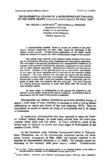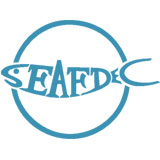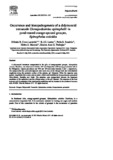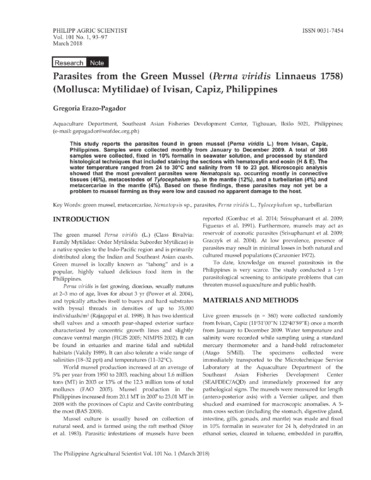Developmental stages of a microsporidian parasite of the white prawn, Penaeus merguiensis de Man 1888
Share
Abstract
A microsporidian parasite found to invade the ovaries of the white prawn, Penaeus merguiensis de Man, 1888, causes the whitening of the mature female gonads. Ultrastructure examination of the white ovaries reveal the presence of spores and other developmental stages of the parasite.
The earliest stage observed is the schizont which contains a few cisternae of endoplasmic reticulum, many ribosomes and a thin plasma membrane. The next stage is the sporont characterized by a pansporoblast membrane, an increase in the amount of endoplasmic reticulum, appearance of more vesicles and of polar filament precursors. Diplokaryotic schizonts and sporonts are also found. Division of the sporonts gives rise to uninucleate sporoblasts. At this stage, the spore organelles start to form and the cell acquires a degree of plarity. The polar filament and the polar sao appear and the sporont membrane complex develops into a sporoblast wall. The sporoblast is transformed into a spore with a polar cap, posterior vacuole, polaroplast, and two laters of spore wall, the exospore and the endospore. The polar filament is a tubular structure consisting of seven coils which after the second coil taper abruptly distally.
All these stages of development of the parasite are observed in the infected ovaries within which its life cycle is completed. A probable mode of transmission and life cycle of the parasite is presented.
Suggested Citation
Baticados, M. C. L., & Enriquez, G. L. (1982). Developmental stages of a microsporidian parasite of the white prawn, Penaeus merguiensis de Man 1888. Natural and Applied Science Bulletin , 34(3), 255-270. http://hdl.handle.net/10862/1123
Subject
Collections
- AQD Journal Articles [1240]
Related items
Showing items related by title, author, creator and subject.
-
Histopathology of microsporidian infection in white prawn, Penaeus merguiensis de Man, 1888.
Baticados, Ma. Cecilia L.; Enriquez, Gloria L. (University of the Philippines, 1982)Different stages of the white prawn, Penaeus merguiensis de Man, were examined for microsporidian infection. The parasite was found only in adult female prawns exhibiting white instead of the normal olive-green ovaries. ... -
Occurrence and histopathogenesis of a didymozoid trematode (Gonapodasmius epinepheli) in pond-reared orange-spotted grouper, Epinephelus coioides
Cruz-Lacierda, Erlinda R.; Lester, R. J. G.; Eusebio, Perla S.; Marcial, Helen S.; Pedrajas, Sharon Ann G. (Elsevier, 2001)A didymozoid trematode encapsulated in the gills of orange-spotted grouper, Epinephelus coioides Hamilton, was observed in October 1997 and September 1999 among pond-reared fish in the Philippines. Capsule prevalence was ... -
Parasites from the green mussel (Perna viridis Linnaeus 1758) (Mollusca: Mytilidae) of Ivisan, Capiz, Philippines
Erazo-Pagador, Gregoria (College of Agriculture and Food Science, University of the Philippines Los Baños, 2018)This study reports the parasites found in green mussel (Perna viridis L.) from Ivisan, Capiz, Philippines. Samples were collected monthly from January to December 2009. A total of 360 samples were collected, fixed in 10% ...





